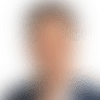TAMPA, Fla. -- NFL Commissioner Roger Goodell and NFL Players Association Executive Director DeMaurice Smith will address reporters on Thursday afternoon in advance of Super Bowl LV -- the culmination of what by any measure has been a remarkably successful 2020 season, with no games canceled amidst the COVID-19 pandemic.
Behind the scenes, there already is work taking place among the league, union and clubs to prepare for a whole new set of challenges and unknowns with COVID continuing to interrupt business as usual in 2021.
Here's a look at where things stand on several key matters, based on recent conversations with sources:
Salary cap
The NFL and NFLPA began preliminary negotiations last month on the 2021 salary cap. Some team officials believe (and surely hope) the cap will ultimately land closer to $185 million per club -- if not a little higher -- than the $175 million minimum the sides agreed to last summer as they braced for empty and mostly empty stadiums.
The league didn't provide clubs with its annual cap projection at the delayed labor seminar Tuesday, nor has it committed to exactly how to spread the impact of an unprecedented multibillion-dollar revenue shortfall in 2020 over the next few years. (Each year's cap is based on revenue projections for the following season, as well as a "true-up" from the prior year projection. Had the sides not agreed to the $175 million floor for 2021 as part of an overall package on COVID-related economic matters, spreading this year's shortfall into future years, the cap would have plummeted much further from this season's $198.2 million per club.)
Chiefs owner Clark Hunt told reporters this week the final number may not be set until "hours before the start of the league year" March 17. More realistically, teams may find out the number just days before the free-agent negotiating period begins March 15, with the league and union taking all the time possible to assess the climate and budget for the impact of at least one new media deal, which must be finalized before the NFL makes the expected move to a 17-game regular season in 2021.
Some teams did find some added local revenue streams for 2020, though that's not expected to have a major impact on the 2021 cap. And there are still many unknowns.
Attendance
The biggest unknown in projecting revenue for 2021: Will stadiums be full come September?
Dr. Anthony Fauci, the director of the National Institute of Allergy and Infectious Diseases, said in early December he anticipated it "probably will be well into the end of the summer" before sports stadiums could return to capacity. And the pace of vaccinations nationally so far has lagged behind initial projections.
When I asked the league's chief medical officer, Dr. Allen Sills, on Wednesday about Fauci's statement and the greatest barrier to NFL stadiums being full this fall, Sills replied "I sure hope he's right" and emphasized the safety and efficacy of the vaccines (which the NFL is promoting by inviting 7,500 vaccinated healthcare workers to Super Bowl LV), while also expressing personal belief that supplies will increase substantially.
Even if the general population hasn't achieved herd immunity by September, most teams likely could find 65,000 card-carrying vaccinated fans willing to buy tickets. The problem with that approach is it also means telling anyone who can't, or won't, get vaccinated that they can't come, especially if those people are season-ticket holders.
Vaccinations, protocols and rules changes
The NFL cannot unilaterally require players to be vaccinated once they're eligible, since that'd represent a change in working conditions subject to bargaining. Ideally, education will encourage most players to do so on their own, though it's worth noting a relatively small percentage heeded recommendations by league and union medical experts to get flu shots this past fall.
Roger Goodell and DeMaurice Smith have each said repeatedly the NFL won't skip the line when it comes to getting players and other personnel vaccinated. To that end, on a call with agents Jan. 19, Smith told agents there's no "rosy outlook" on widespread vaccinations of players in the coming months and "we're planning for an offseason that looks a lot like last offseason" in terms of organized team activities, minicamps, etc., going all-virtual.
Goodell has already expressed support for some permanent changes to rules on offseason work, such as more virtual training and a longer ramp-up period at the start of training camp. Some other one-year rule changes that were popular with clubs, such as expanded practice squads, have strong support, too.
All of that is subject to bargaining with the union, as are the COVID protocols that evolved over the course of the 2020 season, with all teams placed in the so-called intensive protocols by mid-November, expanding mask requirements and other restrictions.
Free agency
It's all a little unpredictable until the final cap number is known, but every team official says free agency won't be normal. The first wave likely will still get paid, but then the bottom may fall out, leading to a lot of one-year deals.
The further the cap drops, the more veterans who may be cut, turning it into a buyer's market, particularly among those teams that prefer to sign "street" free agents anyway to help with the compensatory draft pick formula.
There's also some sentiment that fewer franchise tags will be applied, and certainly fewer than the 14 applied a year ago, since teams may be more reluctant to carry large one-year numbers on their caps in hopes of doing long-term deals before the July 15 deadline.
Draft
For now, the draft is on in Cleveland from April 29 to May 1. But all the work by clubs leading up to it will be abnormal again.
The annual scouting combine as we know it is off. Private workouts, facility visits, dinners and film sessions with draft prospects are banned. Medical exams are limited. The only in-person access teams have to prospects are at the recently concluded all-star games and upcoming pro days, where each club will be limited to three representatives on campus -- or fewer if required by state and local regulations that in some cases also may restrict in-person contact with players.
Like a year ago, teams will log a lot of hours on FaceTime and probably draft a player or two without ever shaking their hand.
2020, meet 2021.
Follow Tom Pelissero_ on Twitter_.




